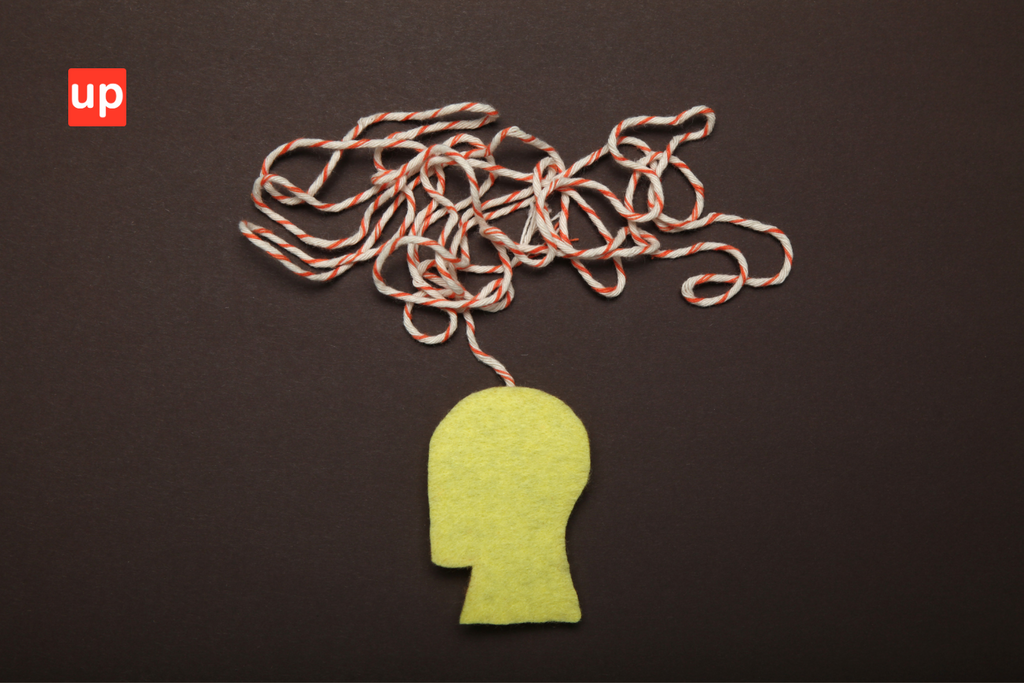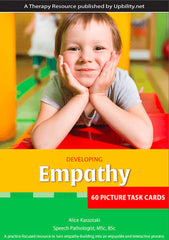Introduction
Childhood is often seen as a carefree period of exploration and discovery, but for some children, this period can be overshadowed by overwhelming anxiety. Anxiety disorders are among the most common mental health problems affecting children and adolescents. Early detection and intervention is vital to improve outcomes and help young people lead fulfilling lives. In this post, we will explore the different types of childhood anxiety disorders, discuss their causes and provide guidance on how to recognise the signs and symptoms so that parents, carers and teachers can provide the support these children need.
What is childhood anxiety disorder?
 Anxiety is a normal and healthy emotion that helps people respond to risks or challenges. However, when anxiety becomes excessive, persistent and interferes with daily life, it can develop into an anxiety disorder. Childhood anxiety disorder refers to a group of mental health conditions characterised by excessive and irrational fear or worry that affects children and adolescents under the age of 18.
Anxiety is a normal and healthy emotion that helps people respond to risks or challenges. However, when anxiety becomes excessive, persistent and interferes with daily life, it can develop into an anxiety disorder. Childhood anxiety disorder refers to a group of mental health conditions characterised by excessive and irrational fear or worry that affects children and adolescents under the age of 18.
There are several types of anxiety disorders that can affect children, including:
Generalised anxiety disorder (GAD) - Children with GAD experience excessive and uncontrollable worry about a wide range of everyday situations, such as school performance, friendships or family issues.
Separation Anxiety Disorder - This disorder is characterized by a child's intense fear of being away from his or her parents or primary caregivers. Separation anxiety is normal in young children, but it becomes a disorder when the fear is excessive and persists beyond the age-appropriate developmental period.
Social Anxiety Disorder - Also known as social phobia, this disorder involves intense fear and avoidance of social situations due to concerns about being judged, embarrassed or humiliated.
Selective Alalia - Children with selective alalia have difficulty speaking in certain social situations, such as at school or in public, despite the fact that they can speak comfortably at home or with close family members.
Specific phobias - A specific phobia is an intense, irrational fear of a particular object or situation, such as animals, heights or storms.
Panic disorder - This disorder involves sudden and recurrent panic attacks, which are episodes of intense fear accompanied by physical symptoms such as palpitations, shortness of breath or dizziness.
Causes of anxiety disorder in children

The development of anxiety disorders in children is influenced by a complex interaction of genetic, environmental and neurobiological factors. Some of the main causes include:
A. Genetic factors - Generalized anxiety disorder tends to run in families, suggesting that genetic factors play an important role in its development. Children with a family history of anxiety or other mental health disorders are at greater risk of developing anxiety disorder themselves.
B. Environmental factors - Certain life experiences and environmental factors can contribute to the development of anxiety disorders in children. These include exposure to chronic stress, family conflict, or traumatic events such as accidents, natural disasters, or abuse.
C. Brain chemistry - Imbalances in neurotransmitters, the chemical messengers in the brain, may contribute to the development of anxiety disorders. Research has shown that people with generalized anxiety disorder have altered levels of certain neurotransmitters, such as serotonin and norepinephrine.
D. Traumatic Experiences - Experiencing or witnessing a traumatic event, such as a car accident, natural disaster, or physical or sexual abuse, can cause an anxiety disorder to develop in children.
Recognition of signs and symptoms
 Recognition of the signs and symptoms of childhood anxiety disorder is essential for early intervention and effective treatment. Symptoms may vary depending on the specific type of anxiety disorder, but some common emotional, physical and behavioral signs include
Recognition of the signs and symptoms of childhood anxiety disorder is essential for early intervention and effective treatment. Symptoms may vary depending on the specific type of anxiety disorder, but some common emotional, physical and behavioral signs include
Emotional signs
Excessive worry - Children with generalized anxiety disorder may worry constantly about various aspects of their lives, such as school, friendships, or family issues, even when there is no obvious reason for concern.
Irritability - Anxious children may become easily upset or frustrated, resulting in increased irritability and moodiness.
Fear of making mistakes - Children with anxiety disorders may have a strong fear of failure or making mistakes, which can lead to perfectionism and procrastination.
Difficulty concentrating - Anxiety can make it difficult for children to focus on homework or schoolwork, resulting in decreased attention and concentration.
Physical signs
Fatigue - Stress can be mentally and physically exhausting, leaving children feeling tired and lethargic, even with adequate sleep.
Sleep disturbances - Children with anxiety disorders may have trouble falling asleep, staying asleep or having frequent nightmares, leading to disrupted sleep patterns.
Headaches or stomachaches - Anxiety can manifest itself with physical symptoms, such as frequent headaches or stomachaches, which often have no clear medical explanation.
Muscle tension - Anxious children may experience muscle tension, resulting in aches, pains or feelings of uneasiness.
Behavioral symptoms
Avoidance of certain situations - Children with generalized anxiety disorder may avoid situations or activities that cause their anxiety, such as social events, school presentations, or certain locations.
Seeking constant reassurance - Anxious children may frequently seek reassurance from parents, teachers or peers about their performance or safety, even when there is no obvious cause for concern.
Difficulty making friends - Social anxiety and excessive worry can make it difficult for children with anxiety disorders to form and maintain friendships.
Decreased school performance - Anxiety can affect a child's ability to concentrate and complete assignments, leading to a decrease in academic performance.
How to support a child with an anxiety disorder
If you suspect a child is struggling with an anxiety disorder, it is important to provide support and encouragement. Here are some strategies to help:
A. Encouraging open communication - Create an environment in which the child feels comfortable discussing feelings and concerns. Listen empathetically and validate his or her feelings while offering reassurance and guidance.
B. Creating a safe and supportive environment - Create routines and structures to help the child feel safe and in control. Encourage participation in activities that build self-esteem and be mindful of your own reactions to stress, as children often model their coping strategies on those of their caregivers.
C. Promote healthy coping strategies - Teach the child relaxation techniques, such as deep breathing exercises or progressive muscle relaxation, to help manage stress. Encourage regular physical activity, a balanced diet and adequate sleep to support overall mental and physical well-being.
D. Seek professional help when necessary - If a child's anxiety is severe, persistent, or causing significant distress, it may be helpful to consult with a mental health professional, such as a psychologist or psychiatrist, who specializes in treating anxiety disorders in children.
Conclusion
Recognizing the signs and symptoms of childhood anxiety disorder is crucial for early intervention and providing the support these children need to overcome their challenges. By understanding the different types of anxiety disorders, their causes and common symptoms, parents, caregivers and educators can be better equipped to help children manage their anxiety and thrive in their daily lives. For additional resources and support, consider reaching out to local mental health organizations, pediatricians, or school counselors who can offer guidance and connect you with appropriate professionals and services.
Additional information
A. Co-existing disorders
Children with generalised anxiety disorder are at increased risk of developing other mental health conditions, such as depression, attention-deficit/hyperactivity disorder (ADHD) or eating disorders. It is important to monitor and treat any co-occurring disorders to ensure comprehensive treatment and support.
B. Impact on family dynamics
A child's anxiety disorder can have a significant impact on family life and relationships. Parents and siblings may need to adjust their routines, communication style and expectations to meet the child's needs. Family therapy or support groups can be valuable resources to address these challenges and promote a supportive family environment.
C. Interventions at school
Schools play a key role in identifying and supporting students with anxiety disorders. Teachers and school counselors can implement accommodations and interventions to help students manage their anxiety, such as providing extra time for tests, offering a quiet space to relax, or developing individualized education plans (IEPs) to address specific needs.
D. Treatment options
There are several evidence-based treatment options for children's anxiety disorders, including:
Cognitive-behavioral therapy (CBT) - This form of treatment focuses on identifying and changing the negative thought patterns and behaviors that contribute to anxiety. CBT is considered the first-line treatment for most anxiety disorders in children and adolescents.
Family therapy - Involving the whole family in therapy can help address underlying issues, improve communication and support the child in managing their anxiety.
Medication - In some cases, medications such as selective serotonin reuptake inhibitors (SSRIs) or benzodiazepines may be prescribed to help manage the symptoms of anxiety disorders. Medication should be used in conjunction with therapy for optimal results and should be closely monitored by a healthcare professional.
E. Prevention strategies
Although it may not be possible to completely prevent anxiety disorders, there are steps that parents and caregivers can take to promote resilience and reduce the risk of developing anxiety-related problems:
Promote a secure bond - A strong parent-child bond can provide a sense of security and stability, helping children feel more confident and better equipped to cope with anxiety.
Encourage problem-solving skills - Help children develop critical thinking and problem-solving skills by encouraging them to find solutions to challenges and navigate difficult situations.
Model healthy coping strategies - Demonstrate effective stress management techniques, such as deep breathing exercises, physical activity, or seeking social support, to show children how to deal with stress and anxiety in healthy ways.
By understanding the complexities of childhood anxiety disorders and providing appropriate support, parents, caregivers and teachers can make a significant difference in the lives of children struggling with anxiety. As a community, we can work together to ensure that these young people receive the care and understanding they need to overcome their challenges and live full, happy lives.
Copyright Upbility 2023
Original content from the Upbility writing team. Reproduction of this article, in whole or in part, without credit to the publisher is prohibited.











